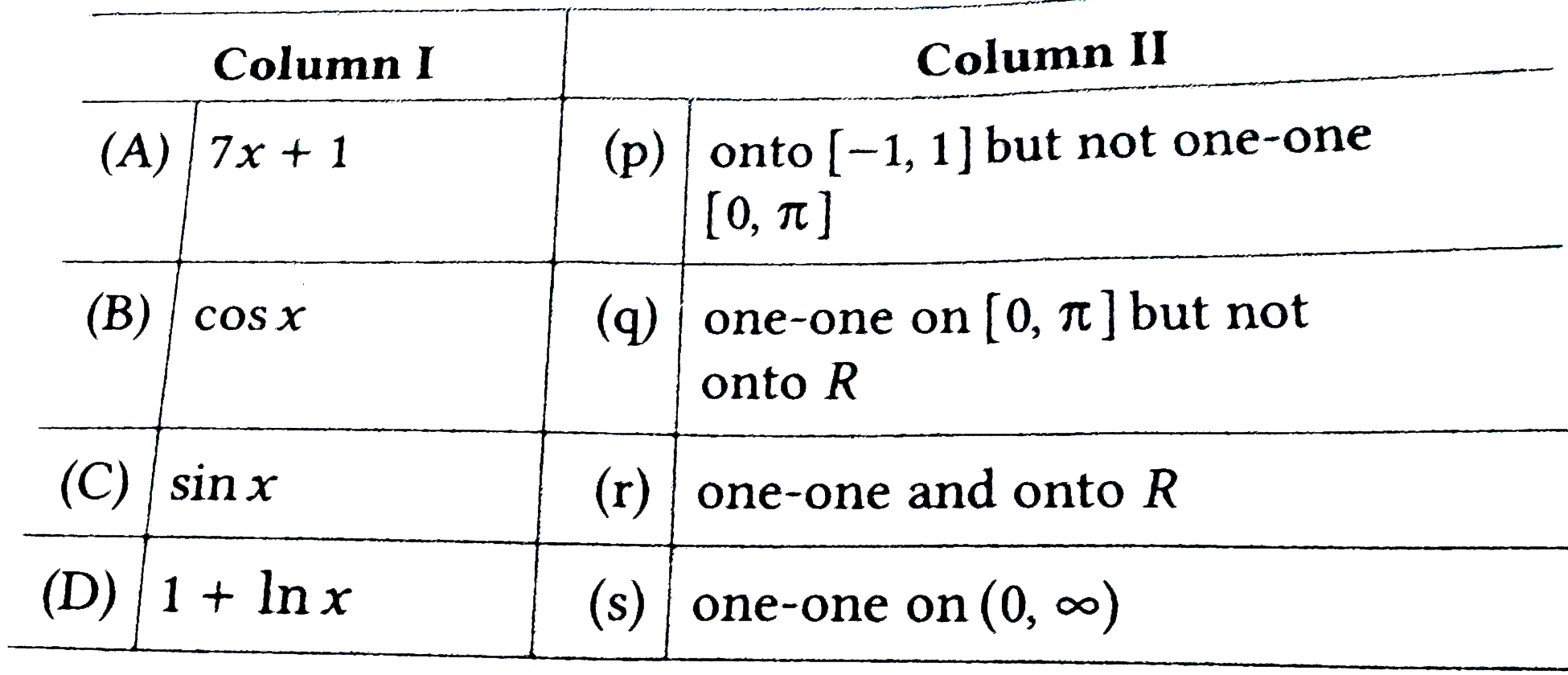The ''panvoid'' of a function is defined as the sum of the integers that do not fall within the domain of the function. All of the following functions have equal panvoids EXCEPT
f(x)=3xx2−4
f(x)=3−xx3−x
f(x)=3x3x2−27
f(x)=2−xx2−x
The correct Answer is:D
To solve the problem, we need to determine the "panvoid" of each function given in the options. The panvoid is defined as the sum of the integers that do not fall within the domain of the function, which typically occurs when the denominator of the function is equal to zero.
Let's analyze each option step by step.
Step 1: Analyze Option A
The function is given as f(x)=1x2−4.
1. Find the denominator:
x2−4
2. Set the denominator to zero:
x2−4=0⟹x2=4⟹x=2 or x=−2
3. Integers not in the domain:
The integers that do not fall within the domain are 2 and −2.
4. Calculate the panvoid:
panvoid=2+(−2)=0
Step 2: Analyze Option B
The function is given as f(x)=1x3−x.
1. Find the denominator:
x3−x
2. Factor the denominator:
x(x2−1)=x(x−1)(x+1)
3. Set the denominator to zero:
x=0,x=1,x=−1
4. Integers not in the domain:
The integers that do not fall within the domain are 0,1,−1.
5. Calculate the panvoid:
panvoid=0+1+(−1)=0
Step 3: Analyze Option C
The function is given as f(x)=13x2−27.
1. Find the denominator:
3x2−27
2. Set the denominator to zero:
3x2−27=0⟹3x2=27⟹x2=9⟹x=3 or x=−3
3. Integers not in the domain:
The integers that do not fall within the domain are 3 and −3.
4. Calculate the panvoid:
panvoid=3+(−3)=0
Step 4: Analyze Option D
The function is given as f(x)=2−xx2−x.
1. Find the denominator:
x2−x
2. Factor the denominator:
x(x−1)
3. Set the denominator to zero:
x=0 or x=1
4. Integers not in the domain:
The integers that do not fall within the domain are 0 and 1.
5. Calculate the panvoid:
panvoid=0+1=1
Conclusion
Now we can summarize the panvoids for each option:
- Option A: panvoid = 0
- Option B: panvoid = 0
- Option C: panvoid = 0
- Option D: panvoid = 1
Thus, all of the following functions have equal panvoids EXCEPT option D.
The function is given as f(x)=1x2−4.
x2−4
2. Set the denominator to zero:
x2−4=0⟹x2=4⟹x=2 or x=−2
3. Integers not in the domain:
The integers that do not fall within the domain are 2 and −2.
4. Calculate the panvoid:
panvoid=2+(−2)=0
The function is given as f(x)=1x3−x.
x3−x
2. Factor the denominator:
x(x2−1)=x(x−1)(x+1)
3. Set the denominator to zero:
x=0,x=1,x=−1
4. Integers not in the domain:
The integers that do not fall within the domain are 0,1,−1.
5. Calculate the panvoid:
panvoid=0+1+(−1)=0
The function is given as f(x)=13x2−27.
3x2−27
2. Set the denominator to zero:
3x2−27=0⟹3x2=27⟹x2=9⟹x=3 or x=−3
3. Integers not in the domain:
The integers that do not fall within the domain are 3 and −3.
4. Calculate the panvoid:
panvoid=3+(−3)=0
The function is given as f(x)=2−xx2−x.
x2−x
2. Factor the denominator:
x(x−1)
3. Set the denominator to zero:
x=0 or x=1
4. Integers not in the domain:
The integers that do not fall within the domain are 0 and 1.
5. Calculate the panvoid:
panvoid=0+1=1
Now we can summarize the panvoids for each option:
- Option A: panvoid = 0
- Option B: panvoid = 0
- Option C: panvoid = 0
- Option D: panvoid = 1
Topper's Solved these Questions
Similar Questions
The functions defined have domain R

View SolutionMitochondria perform all of the following functions except
View SolutionWrite the domain of the following real functions
10x
View SolutionAll of the following are functions of catecholamines except
View SolutionMicrofilaments perform all the following functions, except
View SolutionCortisol can perform all the following functions except
View SolutionWhich of the following functions are defined for all x ?
View SolutionADH carries out following functions except
View SolutionAll of the following are functions of medula oblongata except
View SolutionFind the domain of the following functions:
√x−4
View Solution

